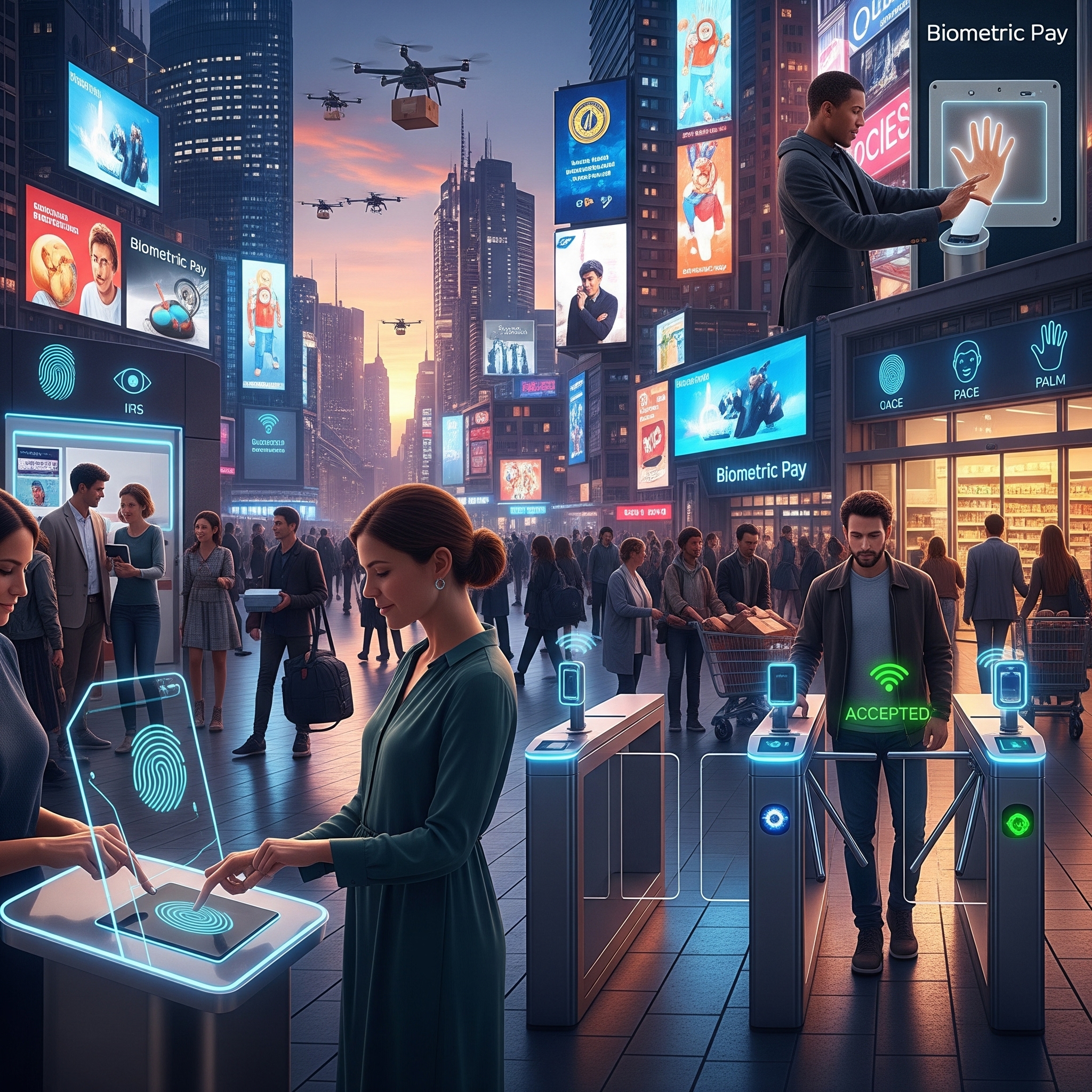No password. No card. No PIN. Just your fingerprint, face, or palm — and payment is complete.
Biometric payments are reshaping the way we interact with money. In many parts of the world, it’s becoming increasingly common to authorize transactions with just a glance or a tap of your finger. It feels fast, secure, and futuristic. But while the technology is advancing quickly, questions about trust, data privacy, and control remain.
What Are Biometric Payments and Why They are Spreading Fast
Biometric payments use unique physical traits such as fingerprints, facial recognition, or palm scans, to verify and authorize financial transactions. They’re becoming popular because they offer key benefits like: speed and contactless security.
In some part of the world the technology has scaled rapidly. From subway gates to vending machines and retail checkouts, facial-payment systems are now part of daily life. With the rise of smartphones and support from major tech players, biometric payments are becoming more accessible and normalized.
Why Users Trust Biometric Technology
Biometrics feel inherently secure — after all, you can forget your password, but not your thumbprint.
They are:
- Difficult to forge (unlike PINs or OTPs)
- Faster than traditional authentication methods
- Built-in to most smartphones and smartwatches
That sense of physical uniqueness makes biometric verification feel more personal and trustworthy. But this confidence can sometimes create a false sense of security.
When Biometric Systems Don’t Work as Expected
No system is perfect, and biometric authentication can fail due to dirty or wet fingers, poor lighting for facial scans, or device and sensor mismatches. If biometric data is ever stolen, the consequences are far more serious than a leaked password — you can reset a PIN, but not your face or fingerprints.
Who Controls Biometric Data and Where It’s Stored
This is one of the least understood aspects of biometric security. Some platforms — like Apple’s Face ID or Windows Hello — store biometric data locally on the device’s secure enclave, which is generally safer. Others, such as certain cloud-based authentication services, upload this data to remote servers where it may be processed, analyzed, or even shared — often without the user’s full understanding or consent.
In many cases, the data may be accessed by third-party vendors, app developers, or even government agencies, depending on local laws and company policies. The problem is that most people skip over lengthy user agreements and simply click “agree,” missing important details about how their biometric information is handled.
For example, Apple faced public scrutiny in 2019 over concerns about how contractors were reviewing Siri audio recordings, which reignited debates about data privacy — even though this wasn’t biometric data, it illustrated how sensitive information can be accessed and reviewed without users realizing it.
The Hidden Risks of Biometric Use
Hacking is only part of the risk. More broadly, biometric data can be used for:
- Profiling and behavioral tracking
- Discrimination or targeted advertising
- Surveillance without consent
In environments with weak or unclear data protection laws — such as parts of Southeast Asia, sub-Saharan Africa, or regions without established privacy frameworks — the risk of misuse rises sharply. When your face becomes your ID, the line between authentication and surveillance can blur quickly, especially if oversight is lacking.
Global Adoption and Regional Approaches
- Asia-Pacific & Middle East: Rapid growth, with biometric systems integrated into public services, airports, and retail payments. Countries like Singapore and the UAE combine deployment with strong data protection regulations and encrypted storage to limit abuse.
- Europe: Slower adoption due to strict privacy laws like GDPR, which require explicit consent, purpose limitation, and regular security audits. Risk management often includes independent oversight bodies and mandatory data breach reporting.
- Africa & Latin America: Biometric systems are used for financial inclusion — for example, Nigeria’s Bank Verification Number (BVN) program or Brazil’s digital ID initiatives. Risk controls vary, but some countries are adopting encryption, limited data retention policies, and multi-factor authentication to safeguard user data.
Globally, the trend is moving forward — but approaches differ based on regulation, trust, and infrastructure, with stronger frameworks typically linked to lower privacy risks.
What Biometric Payments Mean for the Future of Finance
Biometric systems are transforming how we verify identity, access money, and define trust. The shift is clear: instead of pulling out a card to tap, more consumers are paying with a fingerprint, face scan, or palm vein recognition.
In 2023, over 2.5 billion people used some form of biometric authentication daily, and Juniper Research predicts that biometric payment transactions will exceed $1.5 trillion globally by 2028. As payments become more frictionless, data transparency, user consent, and long-term privacy protections must keep pace.
Convenience may already be winning in many markets — but as biometric systems expand into banking, transport, and daily transactions, balancing innovation with ethics becomes critical.
Conclusion: More Than Just a Payment Method
Biometric authentication is fast, intuitive, and now woven into daily life — not just for payments, but for unlocking banking apps, logging into social media, and even accessing government services like Singapore’s Singpass. With this convenience comes a bigger responsibility — for users, platforms, governments, and financial institutions alike.
When your fingerprint becomes your wallet, your face becomes your login, and your biometric ID unlocks multiple layers of your life, the question goes beyond how you pay. It’s about who controls access, who sets the rules, and who safeguards your identity.
The future of payments may be in your hands — but the real issue is: who else is holding it?
Let Remsea Help Your Business Make Smoother Payments

